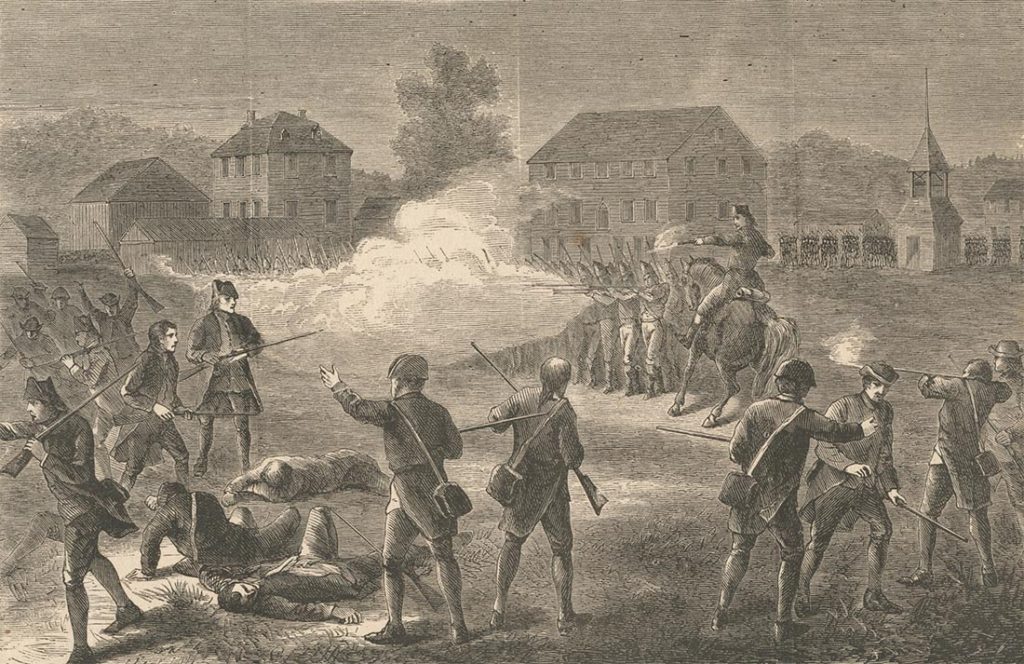In Sum
Session 9.1 – Declarations of Independence
Parliament’s punishment for the Boston Tea Party came in the form of the Coercive Acts, called in the colonies the “Intolerable Acts,” which effectively cut Boston off from the world while also depriving Massachusetts of its own government. A groundswell of support for the beleaguered colonists of Massachusetts developed throughout the colonies. Influenced in part by Jefferson’s Summary View, the First Continental Congress adopted the radical Suffolk Resolves, among other things organizing a general boycott of British goods. Events escalated into a shooting war at the Battles of Lexington and Concord after British troops attempted to seize militia supplies. A Second Continental Congress met in 1775, issuing a Declaration of the Causes and Necessity of Taking Up Arms. While the Congress met, the Battle of Bunker Hill demonstrated that the unfolding war was likely to be a very bloody one. By early 1776, Tom Paine’s Common Sense was converting agitators for English rights into agitators for American independence, and by May Virginia had actually declared its own independence. In early July, the Continental Congress adopted the Jefferson-penned Declaration of Independence as thirteen “States,” united in federation. The states had seceded from the British Empire, and each now claimed “full Power to levy War, conclude Peace, contract Alliances, establish Commerce, and to do all other Acts and Things which Independent States may of right do…” “[W]ith a firm reliance on the protection of divine Providence,” the Declaration’s signees “mutually pledge[d] to each other [their] Lives, [their] Fortunes and [their] sacred Honor.”

